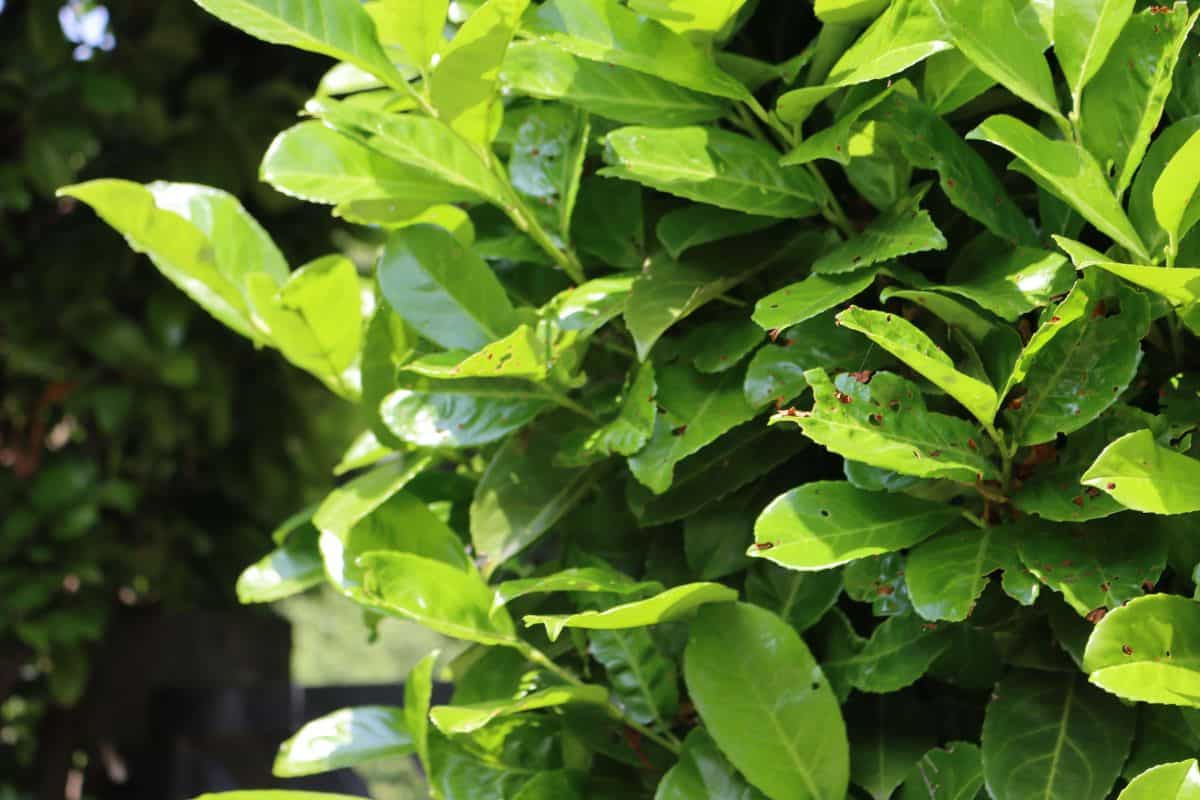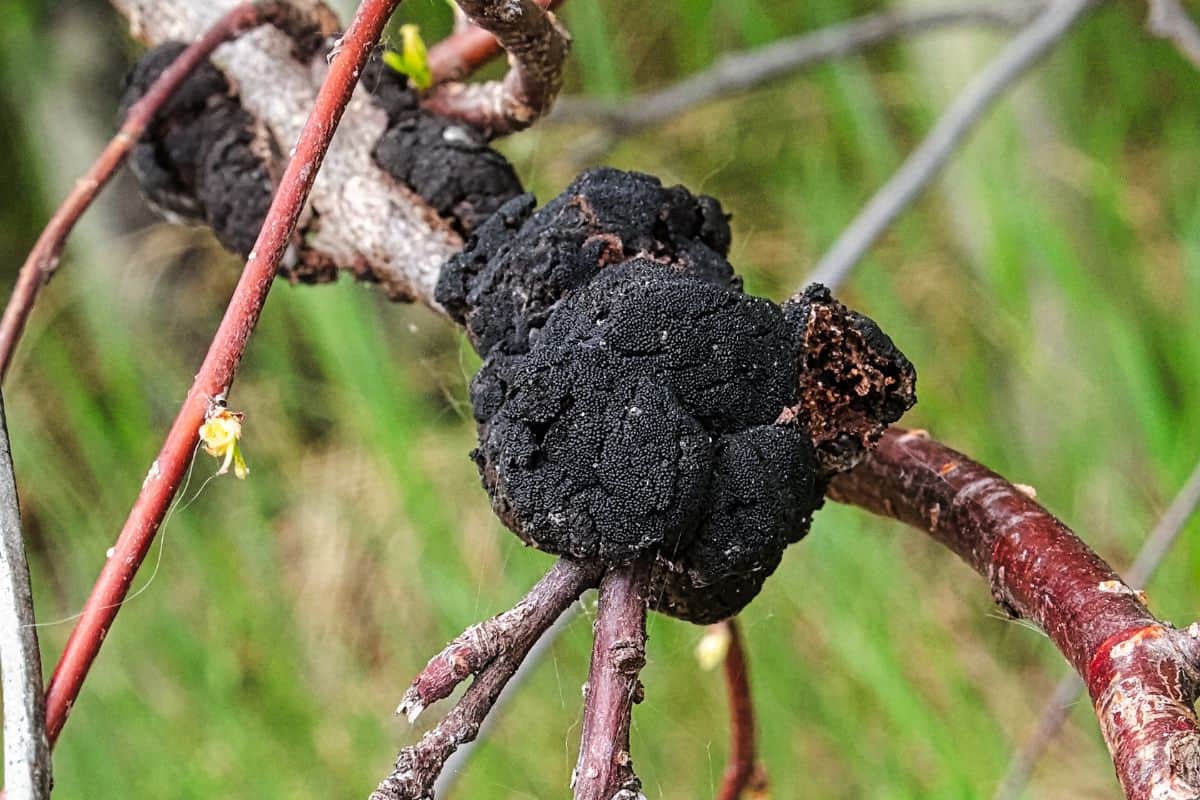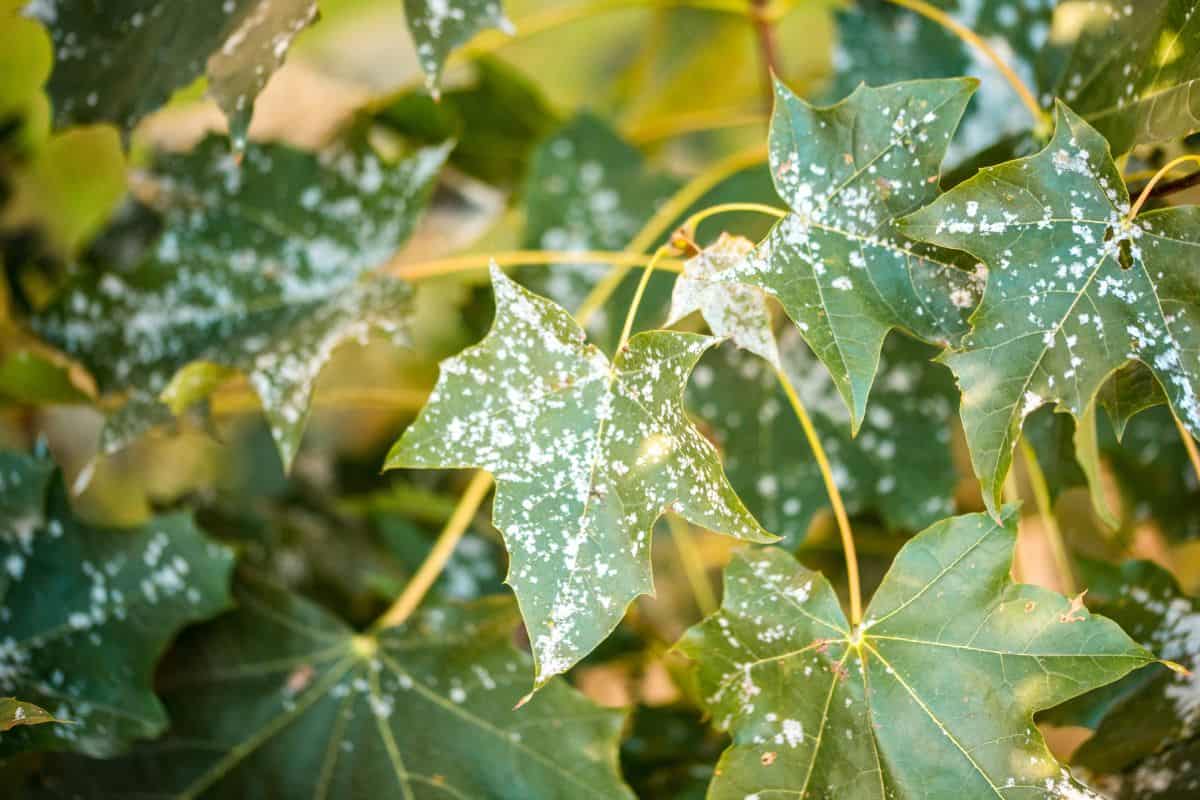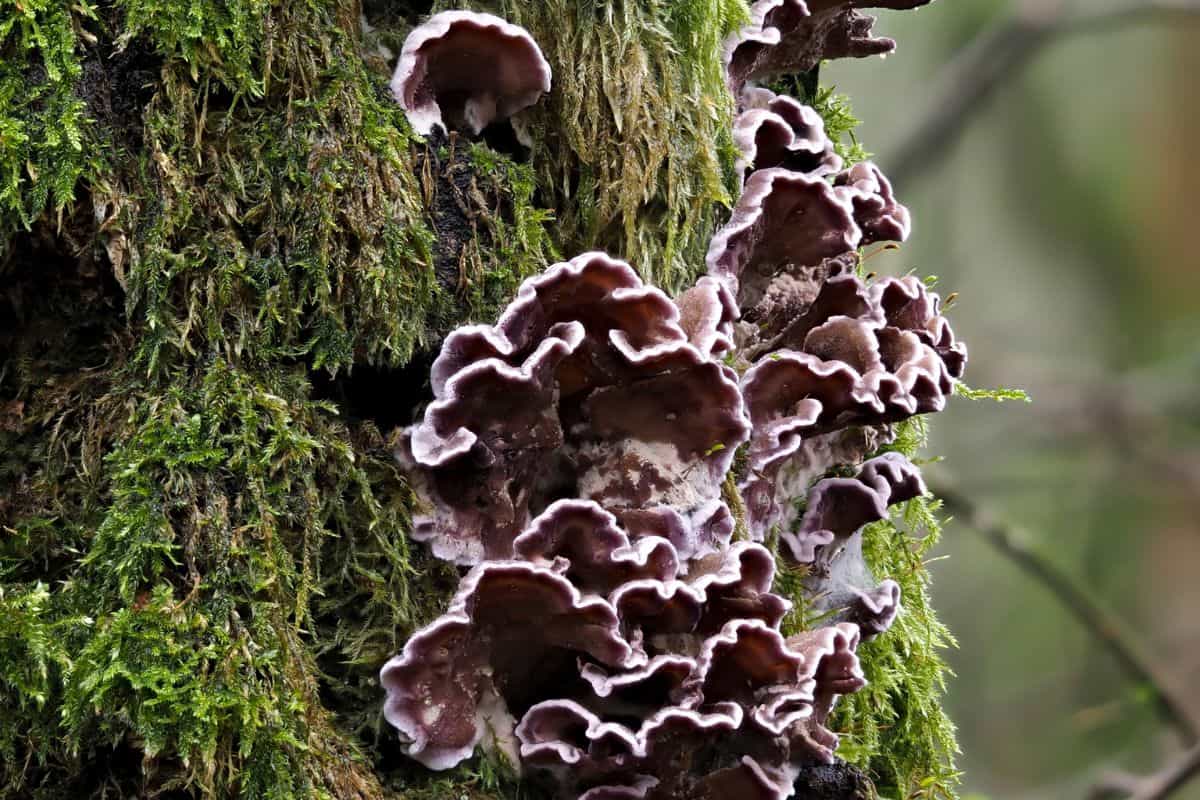Are there cherry trees in your yard? If so, you might have noticed that the leaves are beginning to develop holes. It's crucial to identify the root of the issue so that you can take appropriate action, as this could be a sign of trouble. We've researched extensively about this matter to help you get this problem answered.
Your cherry tree might have leaf spot disease or "shot holes," which is the most likely cause of the holes you've noticed in its leaves. To manage this kind of disease, you should do the following:
- Remove The Infected Leaves
- Prune The Affected Branches
- Apply Fungicide
Continue reading as we discuss thoroughly the reason behind holes in cherry tree leaves and the details of each preventive measure mentioned above. Also, we will share some fungicides that would help to control those destructive organisms on your cherry trees. More information is ahead, so let’s get started!

Why Do Cherry Tree Leaves Have Holes?

If your cherry tree's leaves have a scattering of tiny circular red to purple colored spots or holes, you might have a cherry leaf spot problem. The fungus Blumeriella jaapi is the source of cherry leaf spots. The illness, which also impacts plums, is also referred to as a "shot hole" disease.
Leaf spot is most frequently found on English Morello cherry trees, and it is regarded as a serious disease in the Midwest, Canada, and New England. The disease is so pervasive that it is thought to affect 80% of the orchards in the eastern United States.
The fungus overwinters in diseased leaves that have fallen to the ground. In the spring, wind or rain spreads the spores to newly emerging leaves. After the spores touch down on a leaf, they begin to grow after breaking through the leaf's surface.
The leaf begins to acquire tiny, rounded holes as the fungus spreads. Eventually, the damaged leaves will turn yellow or brown and drop off the tree. If this disease is not treated, your cherry tree could suffer severe harm or even die.
What Can You Do to Save a Cherry Tree with Leaf Holes?
There are a few things you can do to save the tree if you suspect shot hole disease is to blame for the holes in the leaves of your cherry tree. Here are the following:
Remove The Infected Leaves
Make sure to quickly remove any infected leaves from the ground. This will reduce the chance that the fungus will overwinter and spread in the spring.
Prune The Affected Branches
Prune any impacted branches and properly dispose of them. As a result, the disease will be less likely to affect other tree parts. In order to prevent the disease from spreading, you should dispose of these infected branches far from the rest of your yard.
Apply Fungicide
You can treat the cherry tree using a fungicide. This will aid in killing the fungus and stop it from causing additional harm. Apply certain synthetic fungicides like chlorothalonil or fungicides made of fixed copper.
When buds swell in the late winter or between full bloom/petal fall, or if the spring has an extended period of rainy weather, it might be necessary to repeat treatment. To avoid damaging the tree, be sure to carefully adhere to the instructions on the label.
Following are some fungicides available on the market that you can use for shot hole diseases:
Bonide Copper Fungicide
You can use this liquid copper fungicide for all of your organic gardening requirements because it has been approved. You can use even on the harvest day. This organic fungicide is made to be used around people and animals without causing harm.


Click here to see this Bonide Liquid Copper fungicide on Amazon.
Daconil Fungicide
This fungicide stops plant diseases before they start. Daconil offers three-ways of: controling, stopping, and preventing several listed fungal diseases, including leaf spot, downy mildew, fruit rot, blight, and rust.


Click here to see this Daconil fungicide on Amazon.
Neem Oil Fungicide
This fungicide is also an excellent organic fungicide choice that won't harm the environment. It is also a miticide and insecticide. You can use it on all of your plants that have a disease or pest issues.


Click here to see this Neem Oil fungicide on Amazon.
Mancozeb Fungicide
Mancozeb is categorized as a contact fungicide with preventative properties. Forming a complex with enzymes containing metals, including those involved in ATP synthesis, prevents the activity of enzymes in fungi.


Click here to see this Mancozeb fungicide on Amazon.
Kocide Fungicide
It maintains plant safety while delivering the highest concentration of biologically active copper ions. While maintaining excellent disease protection, less metallic copper is used due to its BioActive technology, a benefit for the environment.


Click here to see this Kocide fungicide on Amazon.
Additional Common Cherry Tree Diseases And Potential Treatment
Disease symptoms on your trees can be frightening. These pathogens can destroy an entire cherry tree orchard, preventing any lovely blossoms or juicy fruit from bearing. But when cherry tree growers take the proper precautions, they reduce their trees' susceptibility to infection and raise the likelihood of a healthy bloom and mouthwatering harvest.
Black Knot

It is a type of swelling or knot that grows up to six inches long on trees. When the disease is not treated, these knots spread to more locations around the tree.
The knots could be hidden by olive-green, velvety fungus growth. Due to excessive knot growth, diseased twigs frequently bend. Infected branches may wilt and stop producing leaves, which will ultimately kill the tree as a whole.
During the dormant season, trim 3" to 4'' below the knot. Clean and sterilize all pruning tools. Burn or bury all infected material. If you don't, the disease may still be able to infect healthy trees. Remove cherry trees that are badly infected.
Brown Rot

The initial signs of brown rot are blossom browning and twig death. While still attached to the tree, the diseased twigs' leaves turn brown and collapse. Powdery brown-gray spores may be visible on infected flowers, fruits, or twigs when the weather conditions are wet enough.
There are no effective cures for brown rot once it has affected your cherries. Use sterile pruning implements to remove any impacted tree parts 4" to 6" below the sunk dead tissue. To stop the infection from spreading, burn or bury the pruned materials.
You can prevent the fungus by thinning your fruit trees, which promotes airflow and creates a dryer environment. Consider using fungicides if brown rot is uncontrollable and is still affecting your trees.
Cytospora Canker

Branch wilting occurs as a result of dark, depressing cankers that form on cherry tree branches. The canker's edge may develop a gum that is amber in color. The limb will eventually become girdled by the canker and pass away.
This Cytospora canker infection cannot be treated chemically. Reduce tree stress to prevent infection. During the growing season, when it is simpler to spot the cankers and limbs with dieback, prune your infected cherry tree.
Powdery Mildew

On young cherry leaves, there are a few light powdery patches. Older leaves may be more resistant to powdery mildew, which reduces the likelihood of them developing powdery patches. The affected leaves could twist, swell, or distort. The cherry's stem end might grow a white fungus.
Avoid early irrigation because it could lead to an increase in powdery mildew infections. In the spring, the ground should still be moist, and excessive watering could encourage the growth of powdery mildew. A two-week delay in irrigation can prevent the disease from spreading while having no negative effects on the fruit.
Your cherry tree's pruning will promote airflow and leaf dryness. Remember that most fungicides are preventative in nature and do not cure the disease if you decide to use them as a treatment.
Silver Leaf

The affected leaves develop a silver sheen as the first sign of silver leaf. From tree to tree, a different number of leaves will be specifically impacted. Silvery leaf symptoms may not persist from year to year, and the leaves may develop brown, dead patches.
If they show up one year, they might not the following. Do not assume a full recovery because there are no symptoms. It's possible to see a dark stain running underneath branches with symptomatic leaves. Infected trees will develop white-edged, purple-brown conks on their branches or trunks.
Cut off any branches that have conks or leaf symptoms. Where staining and conks are visible, prune the branches at least 4" below the surface. Mark the trees that are sick. In this way, you will know to closely monitor that specific tree if symptoms do not return the following year.
Provide enough water for the diseased trees—roughly 10 gallons for every inch of tree diameter—as the fungus restricts water movement in branches. There are no fungicides available to treat this illness.
Wrapping Things Up

Maintaining good hygiene is the most effective way to stop shot hole disease from spreading to your cherry tree. This means that you should take immediate action to remove any infected leaves or branches from the ground and properly dispose of them.
Regular pruning is also necessary to remove any diseased or dead branches from your cherry tree. Spray fungicide regularly because it kills any spores that are attempting to infect the tree. The tree's general health will benefit from this, making it less prone to illness.
If you notice any unsettling signs in your cherry tree, calling a certified arborist (tree expert) nearby is your last option. They can treat trees that are infected and remove them. By taking preventive measures against the disease, arborists can even help growers of cherry trees before symptoms appear.
Check out some of our interesting topics below to understand more about cherry trees.
